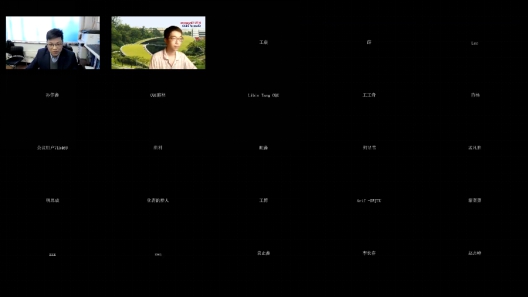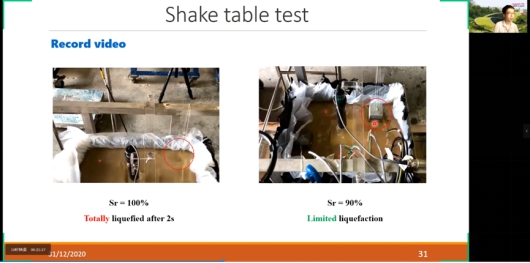On December 31, 2020, Dr. Kangda Wang from Nanyang Technological University, Singapore, gave an academic report entitled "mitigation of liquefaction using biogas desaturation method". The academic report is an online lecture series by the International Society of Soil Mechanics and Geotechnical Engineering (ISSMGE-TC303). The webinar was hosted by Professor Chen Yumin of Hohai University. Faculty and students from Chongqing University, Hohai University, China University of Geosciences and other institutes attended the discussion.

This presentation aims to develop an optimized RF-SVM model for seismic performance evaluation of buildings in mountainous area. Based on the field survey of the buildings damage in Shuanghe Town, the epicenter of Changning MS6.0 earthquake on June 17, 2019, 19 factors including seismic factors, geological conditions, topography, environmental factors and building conditions were selected as the influencing factors of seismic performance evaluation of buildings in mountainous areas. The geospatial database of influence factors was established by 30M resolution cells. The 855 buildings with intact, cracked, dilapidated and collapsed buildings were randomly divided into 595 groups of training dataset and 260 groups of test dataset. Based on the training dataset, the importance of impact factors of seismic performance evaluation of buildings was analyzed by using random forest (RF) method. On basis of factors screening by recursive feature elimination, support vector machine (SVM) was used to develop evaluation model for seismic performance of buildings. Finally, the accuracy of the seismic performance evaluation model is evaluated by test dataset. The results show that the influence degree of seismic intensity, curvature of building and seismic structure on the results is significant. The output accuracy of training dataset by SVM model is 0.91; the output accuracy of test data is 0.65; and the overall prediction accuracy of the model is 0.88. The seismic performance evaluation model of buildings in mountainous area based on RF-SVM method has certain stability and good prediction reliability, which can improve the evaluation efficiency of buildings damaged after earthquake.

This seminar expanded the academic horizons of the students, deepened their understanding of the cutting-edge techniques of geotechnical engineering, and provided guidance for the research students in future scientific investigation.
